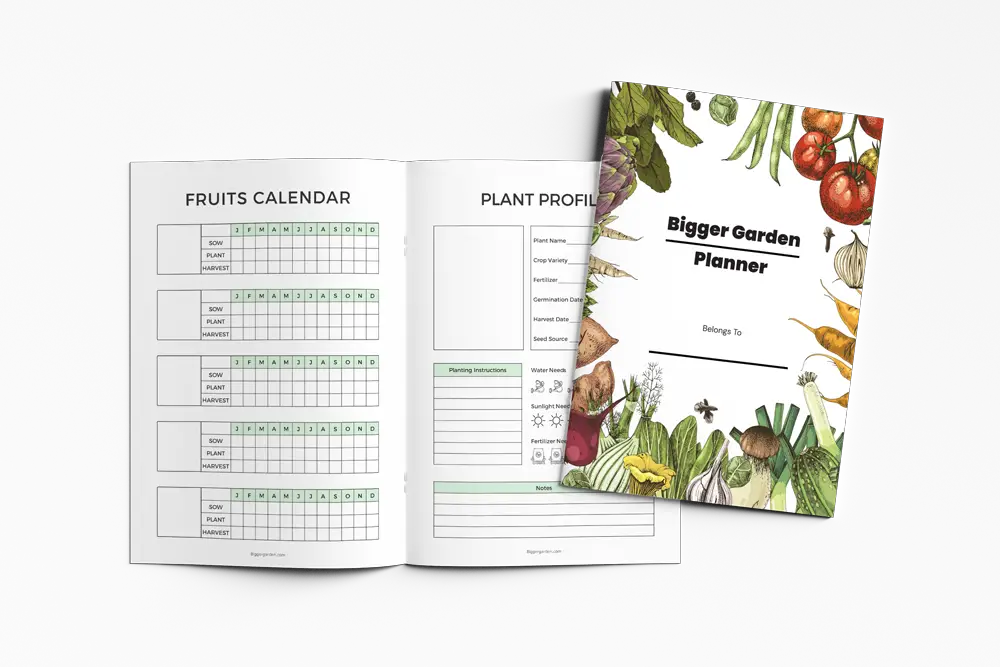What is 14-14-14 fertilizer good for? A complete Guide

This post follows our research editorial guidelines.

For every hungry plant in the garden, there’s a fertilizer blend that will hit the spot. Lawns love 16-4-8 fertilizer, and bone meal is an excellent friend to tomatoes and roses. But what about Triple 14? This heavy hitter has its own role to play but needs to be treated respectfully to get the most from its impressive power.

Table of Contents
What is 14-14-14 fertilizer used for?
A 14-14-14 ratio fertilizer is best to support the establishment of new roots, flowers and fruit without neglecting foliage. It’s best used as a seasonal boost, to provide what’s lost over the growing season and shore up fertility for fruiting and harvest.
What is 14-14-14 fertilizer typically made of?
To understand what’s going on in a 14-14-14 fertilizer, let’s first take a look at what those numbers themselves mean. It’s called the NPK ratio, and it lets us know exactly what that bag of fertilizer contains.
NPK % explained
The NPK is a ratio, laying out how much of each of the big three nutrients are present.
Each letter describes the available amount of a specific element in the blend. (14) N stands for nitrogen, (14) P stands for phosphorus, and (14) K stands for potassium. They are the three most important nutrients for all plant function.
Those numbers are more than just what’s inside. It also tells us how much, as a percentage by weight, and how they compare to each other.
An NKP of 14-14-14 tells us a lot about the fertilizer in question. It tells us that it will contain equal amounts of nitrogen, phosphorus and potassium.
It’s also very strong, with almost a third of the bag comprised of active ingredients, and needs to handled carefully. Always read the instructions on packaging, and be sure to stick to them!
Nitrogen
Nitrogen is arguably the most important element for plant growth. It’s involved in almost every aspect of how plants grow. Nitrogen is critical in the formation of strong, bright leaves, and plays a role in all functions from photosynthesis to blossoming and beyond.
Nitrogen is also one of the most abundant elements. It makes up most of the gas in the atmosphere, and is present in all living tissue. But it’s tough for plants to access. Most can’t draw it from the air, and must use the nitrogen already present in the soil.
For most of recorded history, nitrogen been added back to soils through mulch, compost or manure. These days a lot comes from synthetic fertilizers like a 14-14-14 blend. There’s always a demand for high nitrogen fertilizers.
Phosphorous
Phosphorus is another element key to plant biology. It’s the cornerstone for how they turn sunlight to energy, and is used to haul that energy around their bodies. Plants use a lot of phosphorous when developing new roots, growing seeds or fruit and producing beautiful flowers. It’s a good all-rounder.
It’s an abundant element and makes up around 2% of the Earth’s crust, but there’s a catch – much of it is deep in the ground, far beyond where even the most intrepid of roots can reach. High phosphorus fertilizers often fill the gap, especially during the heady days of spring when flowers bloom and new seeds sprout.
It does pay to be careful with phosphorus, however. An excess in the soil can lock up other elements, causing deficiencies. It’s also prone to washing into rivers and creeks, causing algal blooms and other environmental problems.
Potassium
Potassium is the final but no less important element listed on an NPK ratio. Potassium keeps the plants breathing by opening and closing its pores, and helps keep enzymes at work regulating growth in all weather conditions.
Because it’s such a lively element, it tends to get bound up into the soil, bonding to other nutrients or even inert materials like clay or stone. It’s also frequently removed from the garden, as every shed leaf or clipped blade of grass has a store of potassium inside. Once that material is removed, the potassium is lost from the garden too and will need to be replaced by a potassium rich fertilizer.
3 Best plants to use triple 14 fertilizer on
Nightshades and other Heavy Feeding Crops
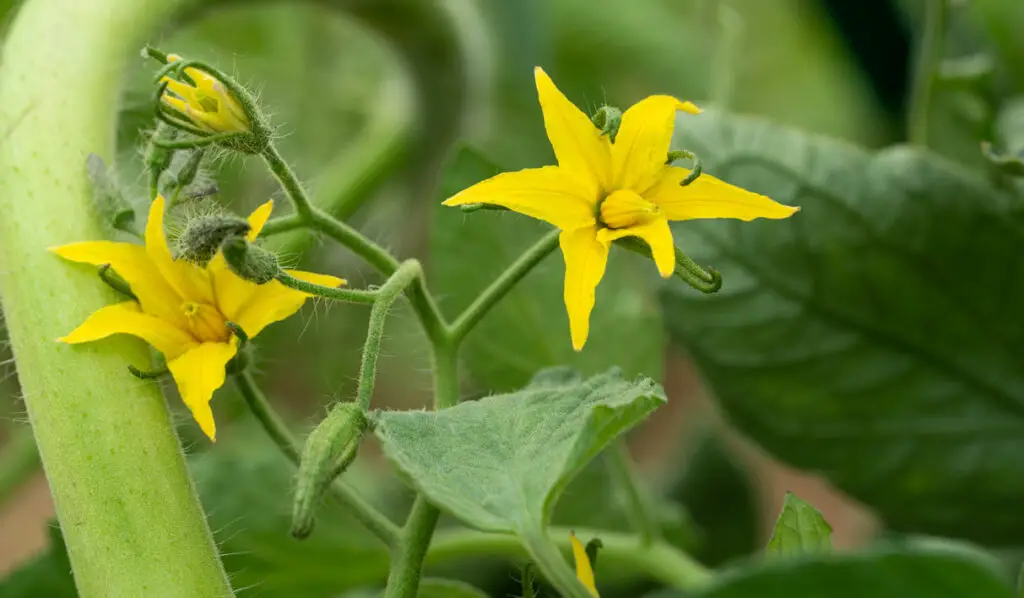
I’m a huge fan of growing peppers. I always have one or two plants on the go, either outdoors during our short Canadian summer or more often in a hydroponic setup.
One thing I’ve learned is that they are very hungry plants! They need support all through their lives, and especially at the height of the season just before they flower. You also have to get nutrient rations just right – too much nitrogen and you’ll have a crop of less-than-delicious leaves, and very few peppers.
This is also true for all nightshades – tomatoes, potatoes, eggplants and the like – and for many other heavy feeders like broccoli and zucchinis.
Once they’ve become established it’s good to switch from a nitrogen-heavy fertilizer to something more focused on flowers and fruit, and a 14-14-14 will get the job done.
Young Fruit Trees
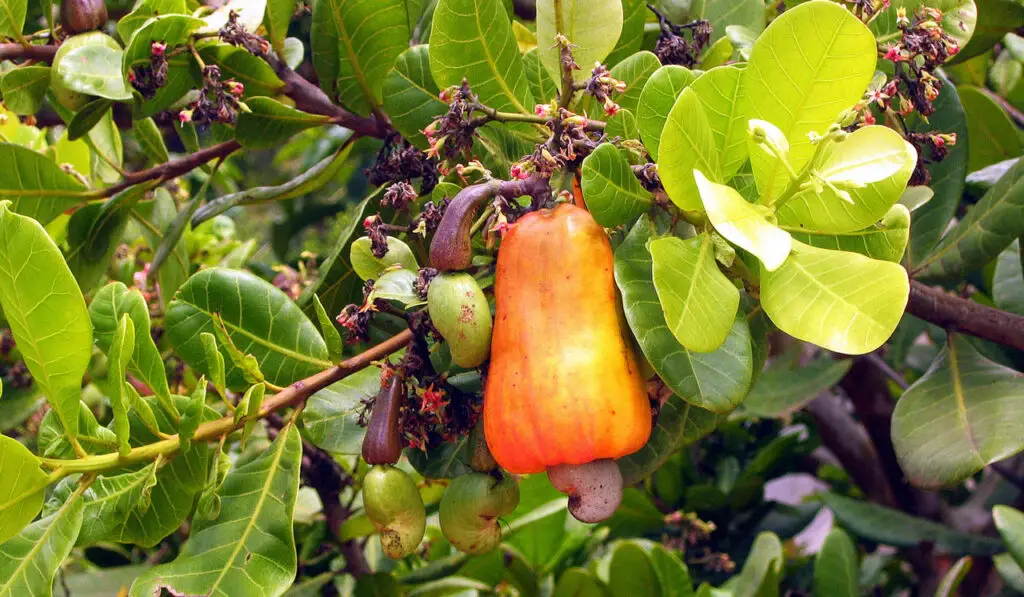
Unlike nightshades, newly transplanted fruit trees don’t have particularly huge nutritional requirements. What they do have, however, are roots that are sensitive to nitrogen. They still need it, in order to grow fresh foliage, but too much will inhibit root growth.
High phosphorus fertilizers are generally recommended when planting new trees, but it needs to be kept in balance with the other big three. A modest dose of Triple 14 is a good compromise. Its formulation provides what the young tree needs to become established without presenting a hazard to the roots.
The seedlings and saplings of tropical fruit trees are especially good candidates for this treatment, should you be in the south. Mangos, bananas, pawpaws, and even durian do very well with a solid dose of 14-14-14.
Flowering Perennials
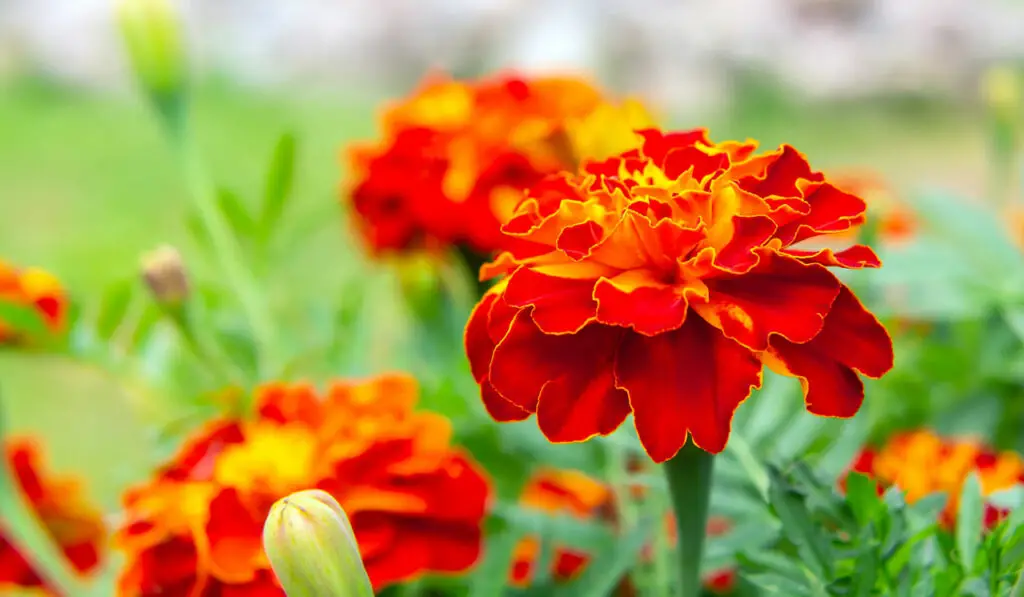
Geraniums, mums, marigolds and impatiens all benefit from a bit of Triple 14, whether bedded or in containers. Too much nitrogen and you’ll have tall growth that flops all over the place, but a balanced fertilizer like 14-14-14 will keep those flowers coming without risking leggy plants. After all, they’ve done a lot of the hard work of growing leaves already, and generally need more support for blooms.
As they’re often quite compact plants, you don’t want to go overboard. A teaspoon per 4-inch plant will do, applied at the peak of the growing season. That will replace what flowering takes out of them, and keep them in fine fettle for the following year.
3 plants to not use triple 14 fertilizer on
Lawns

Too often lawn growing advice is to simply keep dumping fertilizer of every type onto your grass. But grass really isn’t that fussy, and does best when you fertilize at a ratio similar to what they need.
If you want to use a strong, synthetic fertilizer on your lawn, I’d suggest sticking to a 16-4-8 fertilizer blend. It’s much closer to what turf actually needs, and will help prevent the buildup of too much phosphorus beneath the surface.
Phosphorus Sensitive Plants
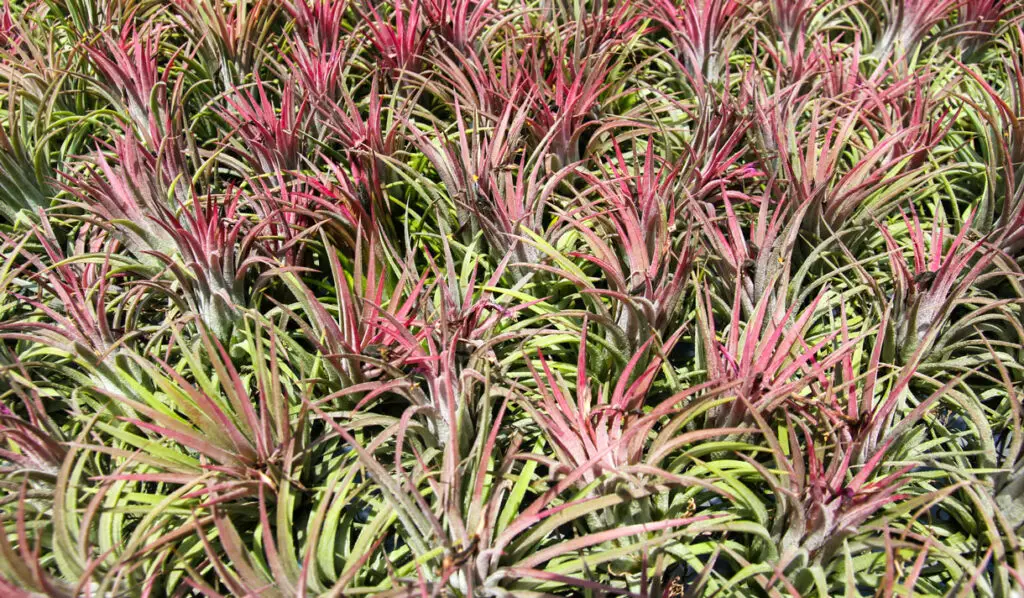
Not all plants appreciate a big dose of phosphorus. Most desert and rainforest specialists have evolved to get by on very little, and will actively be harmed by too much nutrition.
This is doubly true of many Australian plants like banksias, grevilleas, and melalucas, as Australian desert soils are very low in phosphorus. Likewise, bromeliads and air plants do not benefit from regular fertilization at all, and will quickly become overwhelmed with the sheer power of a 14-14-14 fertilizer.
Leafy Green Vegetables.
Herbs, lettuces, cabbages, and other leafy greens need lots of nitrogen, especially if they’re being harvested regularly. And while Triple 14 contains a lot of it, it’s not really enough when compared to other, richer sources.
In addition, the excess phosphorus and potassium is likely to inspire flowering and seed development, too, which is largely the opposite of what’s desired.
When and how often to use 14-14-14 fertilizer
Triple 14 is strong, with very high quantities of phosphorus and potassium compared to what plants actually use. You need to be careful how you apply it.
While the ratios seem balanced, it’s important to consider how plants metabolize those nutrients. Almost all plant species need far, far more nitrogen than other nutrients, and need very little phosphorus at all. It’s easy to overdo it, and cause real problems with your soil chemistry.
When considering a strong fertilizer, it’s important to test the soil first. Home soil testing kits are cheap and easy to use, and will let you know if your garden will appreciate a good dose of 14-14-14.
You can also have your soil professionally tested. University extension services across the United States offer free or low cost soil testing, and will provide a report that covers the big three as well as micro-nutrients and pH. It’s an excellent resource, and a great way to make sure you aren’t throwing your money away with big applications of a fertilizer your garden does not need.
Is 14-14-14 fertilizer organic?
14-14-14 is far too potent a fertilizer to be made from organic sources. It’s almost always going to be a refined, synthetic product.
That doesn’t mean you shouldn’t use it, however. Because it was formulated in a lab each element is carefully measured and refined, produced in a chemical plant or made from mineral sources that have been treated for consistency and safety. You know exactly what’s inside the bag when you open it.
It’s also very concentrated, and for most gardens you won’t need to add as much of it or as often as you would an organic option, great for saving both time and money.
It is still worth adding organic fertilizers, especially things like mulches, manures and compost. The more decaying plant matter you put in your soil, the more effectively strong synthetics are retained. They work together to give you the best results.
“There is a variety of organic fertilizers. Typically, the nutrient concentration is not as high in organic fertilizers, so it will take more fertilizer to reach the recommended rate. Organic fertilizers are slow to release nutrients. This can be both good and bad. If you need a quick reaction, you won’t see results as fast. However, overtime you may see more uniform growth.”
Allison Kosto, Minnesota State University Extension Agent
Will 14-14-14 fertilizer make blooms bigger?
While on first glance a 14-14-14 may seem like a balanced fertilizer, it’s far from the truth. Because plants require different nutrients in different rations, a 14-14-14 provides a riches of phosphorus and potassium.
While nitrogen is important for overall growth, the production of flowers really drains a plant’s stores of phosphorus. There’s also emerging evidence to suggest that increasing potassium without increasing nitrogen too provides even better support than just increasing phosphorus, so a 14-14-14 has you covered on that front, too.
A 14-14-14 is a good support for massive displays of flowers, while still providing a good dose of nitrogen for foliage and overall growth. If you’d rather just have those flowers, a low nitrogen fertilizer is going to be a better call.
Is 14-14-14 the best fertilizer for tomatoes?
Tomatoes are heavy feeders, and will suck up every scrap of nutrition you throw at them. The ratio on Triple 14 make it a good choice for tomatoes. The balance of nutrition supports lots of blooms, and in turn lots of flowers. It also has enough nitrogen to keep the vines growing along nicely, sending out new shoots and leaves without stimulating too much foliage at the expense of fruit.
Apply 14-14-14 towards the middle of the growing season, when the vines are established and ready to get moving with their fruit. Use a small dose of slow-release granulated Triple 14 scattered broadly across the bed, and water in well.
Can triple 14 be used on house plants?
Triple 14 is a strong synthetic fertilizer which does not make it good for use on your houseplants. It’s powerful stuff, and very easy to do harm than it is to help. Potted plants have a very limited amount of area in their container, so anything that winds up in there will stay put.
That includes high amounts of fertilizer. The ratios of a 14-14-14 do not reflect the general nutritional needs of plants, containing too little nitrogen for most indoor ornamental. That excess phosphorus and potassium will cause problems with the uptake of other micro-nutrients, especially iron, calcium and magnesium.
It’s also very, very strong. Without regular rain or dewfall to dilute it, those powerful quantities themselves risk scalding roots and causing chemical burns.
Final thoughts
Conventional wisdom is that when it comes to NPK, more numbers = more growth. But its important to consider what you need for your own garden, and your own needs. As they say, with great power comes great responsibility, and strong fertilizers are no different.
